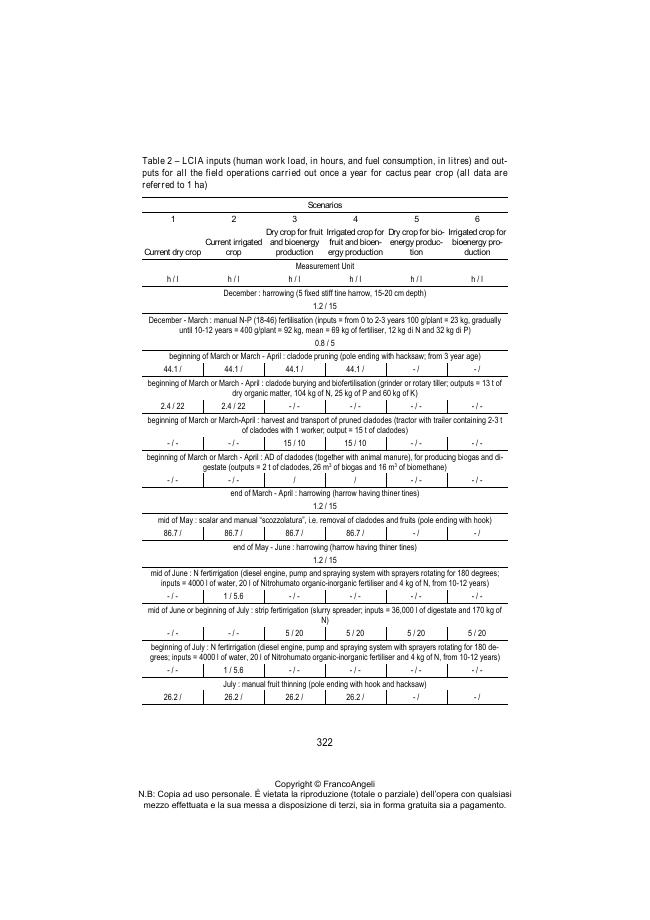Life Cycle Impact Assessment applied to cactus pear crop production for generating bioenergy and biofertiliser
315-329 p.
Among the potential uses of cactus pear, the generation of bioenergy (biogas) and biofertiliser (digestate), from the Anaerobic Digestion (AD) of cladodes and fruits, is surveyed in this paper. Data for Life Cycle Impact Assessment (LCIA) was drawn from a farm located in Roccapalumba (Palermo, Sicily, Italy), where three cultivars were cultivated: 1) yellow pulp cultivar; 2) red pulp cultivar; 3) white pulp cultivar. LCIA was applied to six scenarios: 1) current dry crop; 2) current irrigated crop; 3) dry crop for fruit and bioenergy production; 4) irrigated crop for fruit and bioenergy production; 5) dry crop for bioenergy production; 6) irrigated crop for bioenergy production.
According to LCIA, the highest total GHG emissions were found in Scenarios 2 and 4, while the lowest ones were found in Scenario 5. Moreover, the highest share of environmental impact for Scenarios 2, 4 and 6 is associated with the consumption of cardboard boxes used for collecting and transporting fruits, crop irrigation and a higher human work load. Furthermore, the digestate obtained from the AD process contains nutrients which make it a valuable biofertiliser, so that it reduces the expenditure for mineral fertilisers. [Publisher's text].
-
Articoli dello stesso fascicolo (disponibili singolarmente)
-
Informazioni
Codice DOI: 10.3280/RISS2019-002-S1020
ISSN: 2239-1959
PAROLE CHIAVE
- Opuntia, cladodes, anaerobic digestion, biogas, biomethane, digestate



